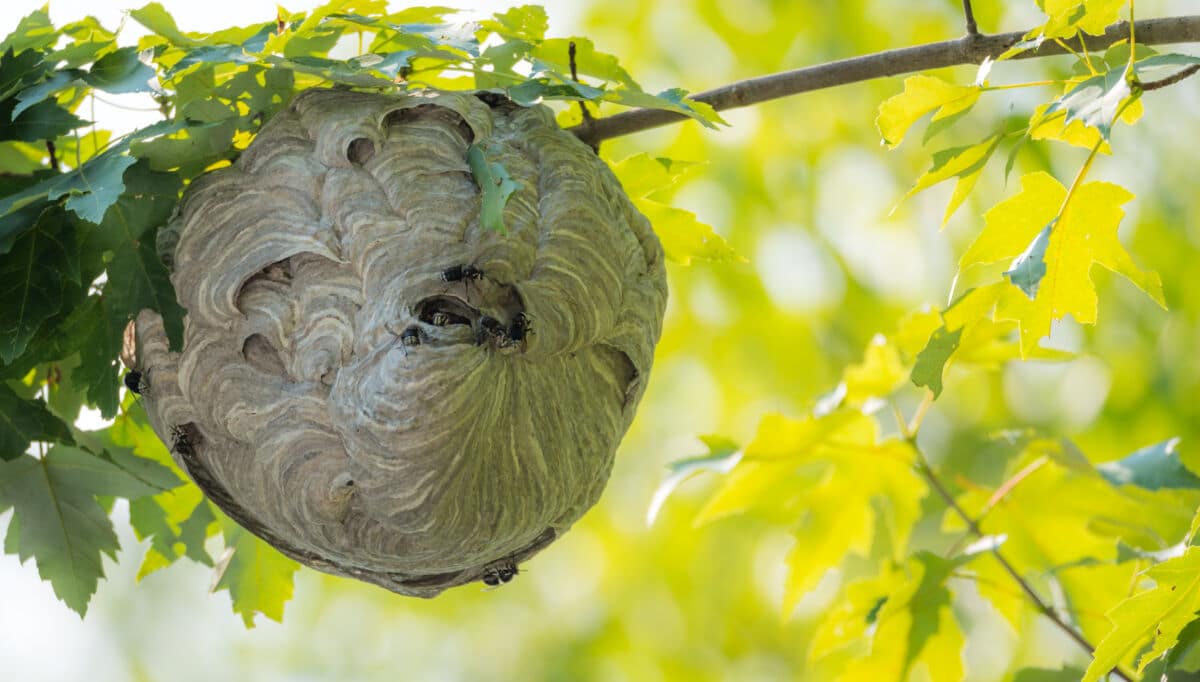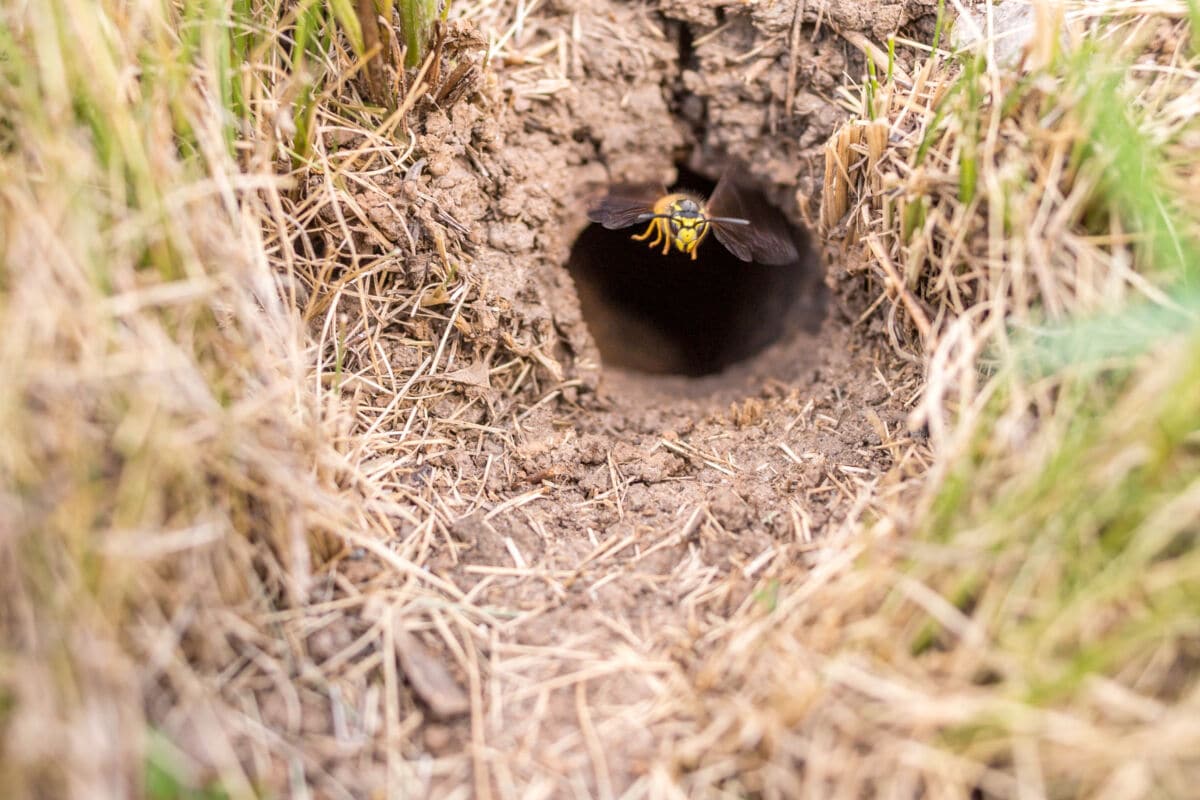How to Kill Wasps: Effective Methods for Warding Off Wasps
Wasps are beneficial insects to food chains and ecosystems, but they can also be harmful to your health! This article will teach you how to kill wasps using the most effective methods.

Maybe you recently had a picnic in your backyard that was plagued with wasps? Maybe you are noticing more wasps than usual around your house? Maybe you’ve even been stung by a wasp?!
If you’ve found your way to this site, you probably have a wasp problem.
These insects can be dangerous, so you need to know how to kill wasps. By reading on, you will learn the indications of wasps, the reasons to get rid of them, and the methods of how to kill wasps.
Wasp Detection
Wasps are a flying insect that typically come armed with a stinger in the rear with the capability to sting and hurt people. Most wasps are about ½ to 1 inch in size, but some can be up to 2 inches long!
Wasps also have thin legs. They are able to be distinguished from bees by their much thinner bodies that seem to be hairless and shiny from our perspective. You will notice them when you see them flying outside.
Why Get Rid of Wasps?
As Colorado State University states, wasps are actually very beneficial creatures. They eat many pests, including flies, crickets, and caterpillars. Further, they are good pollinators. However, they can also be dangerous.
Similar to a hornet’s nest, if a wasp nest is near a home or place where people gather, there is a high chance that someone will get stung. This is normally not a big deal, as people who aren’t allergic to wasp venom will only experience itching, burning, redness, swelling, and tenderness in the site stung.
These stings can be treated with ice, ointment, or other natural remedies like honey. However, if you are allergic to wasp venom, you will have a somewhat more severe reaction, like having an upset stomach, swelling in other places, hives, a rash, or minor breathing problems.
These symptoms can be treated with an antihistamine. There are some people who will have even worse reactions to these stings! Some people can go into shock, which causes trouble breathing, swelling in their throat, fainting, and major swelling. These people can die if they are not treated quickly after they are stung.
This list of symptoms related to stings might really scare you, but wasps aren’t all that bad. They will only sting to defend themselves or their colony, so if their nest is away from humans, you will be fine. However, if the nest is near you, something will probably have to be done about it.
Wasp Nest Types
So you see wasps flying around your house. But these aren’t just nomadic wasps; they come from a nest nearby.
This is the first indication of a wasp colony, and a wasp nest. There are different types of nests that wasps will make. First are open-air nests. These are, as the name implies, in open areas!
They will commonly hang from tree limbs, and are the easiest nests to spot and get rid of.

Next are concealed nests. These are often on overhangs of buildings, or in nooks or crannies of structures. These are more difficult to treat. Finally, there are ground nests.
These wasp nests are in the ground, and can be destroyed easier than concealed nests, but not quite as easily as open-air nests.
Once you find a wasp nest, clearly mark it with either red flags, arrows pointing to it, or other identification. Just make sure you don’t mark too close to the nest!
Each type of nest will need to be gotten rid of in a slightly different way. You need to know how to eliminate different nests in order to know how to kill wasps.
Killing Wasps
The most effective way to kill wasps is to kill them in their nest, and get rid of the nest. If you are highly allergic to wasps, you should hire an exterminator.
However, if you have a bit of courage and a bit of stupidity and you want to know how to kill the wasps yourself, here you are! There are different ways to get rid of different types of nests, so find which one you need and read on!
Nests in the Open
If a wasp nest is in the open, it only needs to be eradicated if it’s near a home or a place where humans hang out.
To kill wasps here, use a pressurized wasp and hornet spray that shoots a continuous stream. Always make sure to check the spray to make sure it is safe and legal to use in your area!
To apply the spray, spray it into the entrance to the nest in the late evening. Repeat this process every three days until there are no signs of life in the nest. Then you can safely take it down and dispose of it.
Small Nests
If you find a nest at the beginning of summer that is very small, you could use spray. However, you could also go out at night and put a heavy plastic bag over the nest. Then, once it’s covered and the bag is sealed, you can cut the wasp nest from the tree or place that it is hanging from.
You can then either freeze the nest or set it in the sun to kill all the wasps inside. This method poses a much greater risk for the person eradicating the nest, and must be done extremely carefully. For this reason, it’s recommended that you leave this method to the professionals.
Concealed Nests
For a nest that is concealed, or not in the open, you’ll need to do more work. Insecticide sprays don’t usually work very well, as walls or other structures can block it.
Instead, insecticide dusts are more effective. Make sure that you are using a house-safe dust that can be used inside. You can puff this dust into the hole where the wasp nest is using the applicator given in the package. However, if the dust doesn’t include an applicator, and it is legal in your area, you can make one by pouring the dust into an old bottle, and then squeeze it into the crack in the wall.
You may need to drill a few small holes around the main hole in order to apply more insecticide dust. Finally, if there is no immediate danger with a concealed nest, the University of Minnesota recommends waiting until there are freezing temperatures outside before you attempt to kill off the wasps in the nest.
Nests in the Ground

The final type of wasp nest is a ground nest.
The first way to try to get rid of this type of nest is to mix some soap in with water, then pour it over the nest. If that doesn’t succeed in killing the wasps, you can spray a lawn-safe insecticide at the nest entrance, or use a lawn-safe insecticide dust.
Once you are completely sure that the wasps are dead, you should put soil over the nest so that it is not a nuisance.
This is the final nest type, so you should now be confident that you know how to get rid of any wasp nest and how to kill wasps.
Tips
Before you jump out into the yard to kill some wasps, you need to know a few more things. The University of Kentucky states that the best time to treat a nest is in the late evening or night, as most wasps will be in the nest and will be less active. If you treat the nest at night, make sure that you have a flashlight, and put a red film over the flashlight, as wasps can’t see the color red as well. Further, don’t wear your sandals and t-shirt to kill the wasps.
You should wear long pants and a long-sleeved sweatshirt, boots or other closed-toe shoes, heavy gloves, and a hat when you go to kill the wasps. The more layers you have, the better! Finally, walk away right after you spray the wasp nest. Don’t stay there to see your work.
Stay away from it for at least a day, and if the wasps aren’t gone after the first spray, continue to spray every three days. Once there are no signs of life, the nest can be taken down and disposed of so that other pests don’t take it up as a home.
Now that you know how to kill wasps, you’re ready! Use caution, but go fight some bugs!
Share this post
Save time and money on pest control
Subscribe to expert DIY pest control tips, pest control product reviews and information.




